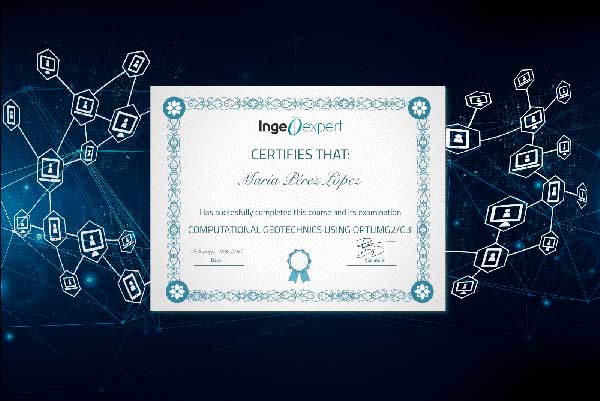Ecological restoration of disturbed sites course
Online course |
|
50 hours / 6 weeks |
|
To be determined |
Introduction
This course will provide students with a foundation in the ecological theories and practical knowledge necessary to design, implement, monitor, and manage the ecological restoration of disturbed sites. Ecosystem disturbance and response, succession, niche modification, community assembly, plant-soil feedbacks and ecosystem resilience will be addressed. The course focuses upon using a function-based approach to restore plant-soil systems across a wide range of impacted sites. Application and on-going development of restoration strategies and technologies are examined within the context of mine sites, oil and gas exploration, and transportation and utility rights-of-way. Students will examine the challenges faced by restoration practitioners in planning, carrying out and evaluating restoration success. Students will also be asked to think creatively in developing solutions to restore a range of impacted landscapes.
Objectives
- Identify and explain how the concepts of stress, frequency, magnitude and fragmentation need to be understood in disturbed landscapes
- Demonstrate the role of ecosystem resilience, resistance and biodiversity in ecological restoration
- Contrast various approaches to restore plant-soil systems based upon theories of succession and community assembly
- Understand management of soil resources on disturbed sites and the sourcing and propagation of plant materials for restoration
- Identify the key principles underpinning the process of ecological restoration
- Demonstrate an understanding of the ecological, socioeconomic, cultural and personal values associated with restoration
- Discuss challenges and apply adaptive planning procedures to restore a range of impacted landscapes sites
Module 1: Ecosystem disturbance as a foundation of understanding and managing plant-soil systems
- -Defining ecological restoration, reclamation and novel ecosystems
- -Stress, frequency and magnitude of disturbance
- -Identifying and assessing reference ecosystems
Module 2: Conserving and restoring soil resources
- -Soils and substrates common on disturbed sites
- -Harvesting soil resources prior to disturbance and managing stockpiles
- -Modifying soil texture, nutrients and moisture conditions
- -Bioengineering solutions and cover systems
Module 3: Locals, natives and ecosystem engineers
- -Theories of succession and plant assembly
- -Mimicking natural disturbance to support native plant assemblies
- -Restoring biodiversity to support long-term resilience
Module 4: Sourcing plant materials, seed collection and plant propagation
- -Planting and transplanting strategies across time and space
- -Choosing plant species for restoration
- -Seed harvesting, processing, storage, evaluation and production
- -Invasive species
Module 5: Restoration project management
- -Principles underpinning the process of ecosystem restoration
- -Integrating different values and perspectives to support restoration outcomes
- -Monitoring and evaluating restoration success
Module 6: Ecological restoration in a global context
- -Lessons from landscape ecology that support restoration
- -Situating restoration within local, regional and global conservation
- -Novel ecosystems in a changing climate
Katherine Stewart
Dr. Katherine Stewart is an Associate Professor in the Department of Soil Science at the University of Saskatchewan. Her research and teaching focusses on remediation and eco-restoration of arctic, alpine and boreal terrestrial environments. She works with belowground soil systems, early successional soil surface communities and native vascular plants allowing for an integrated approach to examining both the impact and restoration of degraded environments. As part of the restorative process, she has worked for over 10 years with Industry partners and Indigenous communities to find new ways to build relationships that promote collaborative environmental decision making and community based restoration.
The course is delivered online through our easy-to-use Virtual Campus platform. For this course, a variety of content is provided including:
– eLearning materials
– Videos
– Interactive multimedia content
– Live webinar classes
– Texts and technical articles
– Case studies
– Assignments and evaluation exercises
Students can download the materials and work through the course at their own pace. We regularly update this course to ensure the latest news and state-of-the-art developments are covered, and your knowledge of the subject is current.
Live webinars form part of our course delivery. These allow students and tutors to go through the course materials, exchange ideas and knowledge, and solve problems together in a virtual classroom setting. Students can also make use of the platform’s forum, a meeting point to interact with tutors and other students.
The tutoring system is managed by email. Students can email the tutor with any questions about the course and the tutor will be happy to help.
This course is aimed at senior undergraduate, and graduate students, as well as, consultants working in environmental assessment, mine licensing and ecological restoration. Early career restoration practitioners and those interested in engaging in local restoration initiatives would also benefit from this course.
Knowledge of introductory disturbance ecology, plant ecology and soil science are required.
Once a student finishes the course and successfully completes the assignments and evaluation tests, they are sent an accreditation certificate. The certificate is issued by Ingeoexpert to verify that the student has passed the course. It is a digital certificate that is unique and tamper-proof – it is protected by Blockchain technology. This means it is possible for anyone to check that it is an authentic, original document.
You will be able to download the certificate in an electronic format from the Virtual Campus platform. The certificate can be forwarded by email, shared on social networks, and embedded on websites. To see an example, click here.
- -Restoration practitioners
- -Environmental consultants working with mines, oil and gas, pipelines, highways etc.
- -Environmental employees with exploration and mining companies
- -Researchers in ecological restoration
Introduction
This course will provide students with a foundation in the ecological theories and practical knowledge necessary to design, implement, monitor, and manage the ecological restoration of disturbed sites. Ecosystem disturbance and response, succession, niche modification, community assembly, plant-soil feedbacks and ecosystem resilience will be addressed. The course focuses upon using a function-based approach to restore plant-soil systems across a wide range of impacted sites. Application and on-going development of restoration strategies and technologies are examined within the context of mine sites, oil and gas exploration, and transportation and utility rights-of-way. Students will examine the challenges faced by restoration practitioners in planning, carrying out and evaluating restoration success. Students will also be asked to think creatively in developing solutions to restore a range of impacted landscapes.
Objectives
- Identify and explain how the concepts of stress, frequency, magnitude and fragmentation need to be understood in disturbed landscapes
- Demonstrate the role of ecosystem resilience, resistance and biodiversity in ecological restoration
- Contrast various approaches to restore plant-soil systems based upon theories of succession and community assembly
- Understand management of soil resources on disturbed sites and the sourcing and propagation of plant materials for restoration
- Identify the key principles underpinning the process of ecological restoration
- Demonstrate an understanding of the ecological, socioeconomic, cultural and personal values associated with restoration
- Discuss challenges and apply adaptive planning procedures to restore a range of impacted landscapes sites
Module 1: Ecosystem disturbance as a foundation of understanding and managing plant-soil systems
- -Defining ecological restoration, reclamation and novel ecosystems
- -Stress, frequency and magnitude of disturbance
- -Identifying and assessing reference ecosystems
Module 2: Conserving and restoring soil resources
- -Soils and substrates common on disturbed sites
- -Harvesting soil resources prior to disturbance and managing stockpiles
- -Modifying soil texture, nutrients and moisture conditions
- -Bioengineering solutions and cover systems
Module 3: Locals, natives and ecosystem engineers
- -Theories of succession and plant assembly
- -Mimicking natural disturbance to support native plant assemblies
- -Restoring biodiversity to support long-term resilience
Module 4: Sourcing plant materials, seed collection and plant propagation
- -Planting and transplanting strategies across time and space
- -Choosing plant species for restoration
- -Seed harvesting, processing, storage, evaluation and production
- -Invasive species
Module 5: Restoration project management
- -Principles underpinning the process of ecosystem restoration
- -Integrating different values and perspectives to support restoration outcomes
- -Monitoring and evaluating restoration success
Module 6: Ecological restoration in a global context
- -Lessons from landscape ecology that support restoration
- -Situating restoration within local, regional and global conservation
- -Novel ecosystems in a changing climate
Katherine Stewart
Dr. Katherine Stewart is an Associate Professor in the Department of Soil Science at the University of Saskatchewan. Her research and teaching focusses on remediation and eco-restoration of arctic, alpine and boreal terrestrial environments. She works with belowground soil systems, early successional soil surface communities and native vascular plants allowing for an integrated approach to examining both the impact and restoration of degraded environments. As part of the restorative process, she has worked for over 10 years with Industry partners and Indigenous communities to find new ways to build relationships that promote collaborative environmental decision making and community based restoration.
The course is delivered online through our easy-to-use Virtual Campus platform. For this course, a variety of content is provided including:
– eLearning materials
– Videos
– Interactive multimedia content
– Live webinar classes
– Texts and technical articles
– Case studies
– Assignments and evaluation exercises
Students can download the materials and work through the course at their own pace. We regularly update this course to ensure the latest news and state-of-the-art developments are covered, and your knowledge of the subject is current.
Live webinars form part of our course delivery. These allow students and tutors to go through the course materials, exchange ideas and knowledge, and solve problems together in a virtual classroom setting. Students can also make use of the platform’s forum, a meeting point to interact with tutors and other students.
The tutoring system is managed by email. Students can email the tutor with any questions about the course and the tutor will be happy to help.
This course is aimed at senior undergraduate, and graduate students, as well as, consultants working in environmental assessment, mine licensing and ecological restoration. Early career restoration practitioners and those interested in engaging in local restoration initiatives would also benefit from this course.
Knowledge of introductory disturbance ecology, plant ecology and soil science are required.
Once a student finishes the course and successfully completes the assignments and evaluation tests, they are sent an accreditation certificate. The certificate is issued by Ingeoexpert to verify that the student has passed the course. It is a digital certificate that is unique and tamper-proof – it is protected by Blockchain technology. This means it is possible for anyone to check that it is an authentic, original document.
You will be able to download the certificate in an electronic format from the Virtual Campus platform. The certificate can be forwarded by email, shared on social networks, and embedded on websites. To see an example, click here.
- -Restoration practitioners
- -Environmental consultants working with mines, oil and gas, pipelines, highways etc.
- -Environmental employees with exploration and mining companies
- -Researchers in ecological restoration
More info
Finish this course and get a certificate based on Blockchain
Ecological restoration of disturbed sites course

Blockchain technology makes the certificate incorruptible, enabling companies to verifiy its autenticity.





Reviews
There are no reviews yet.